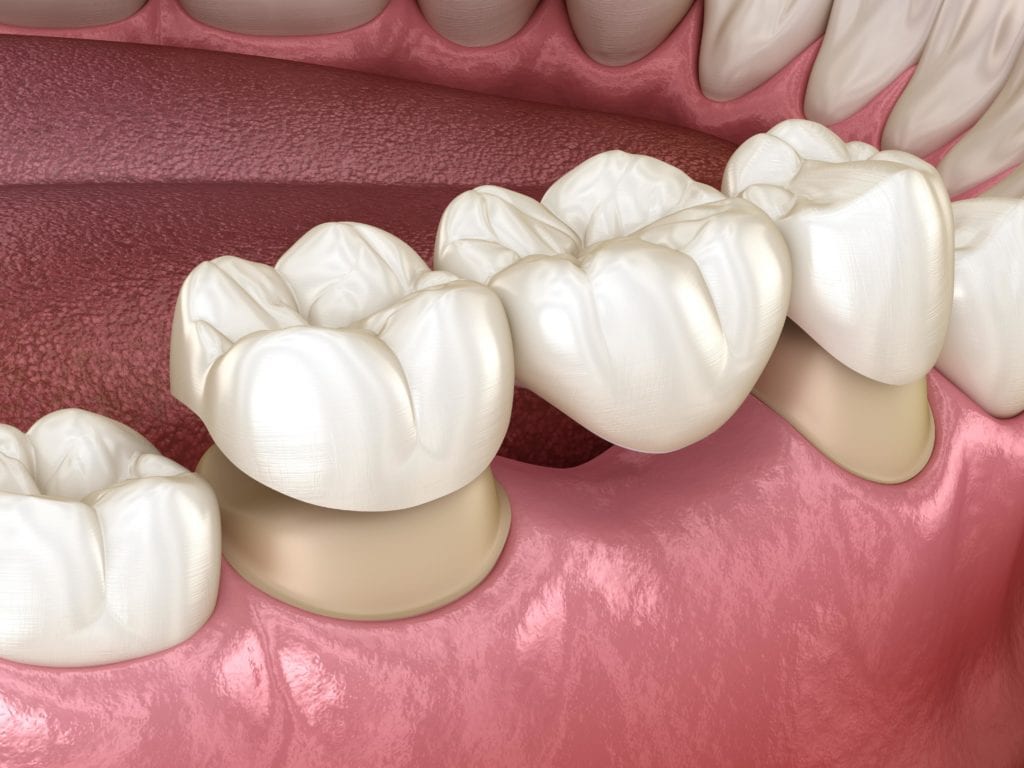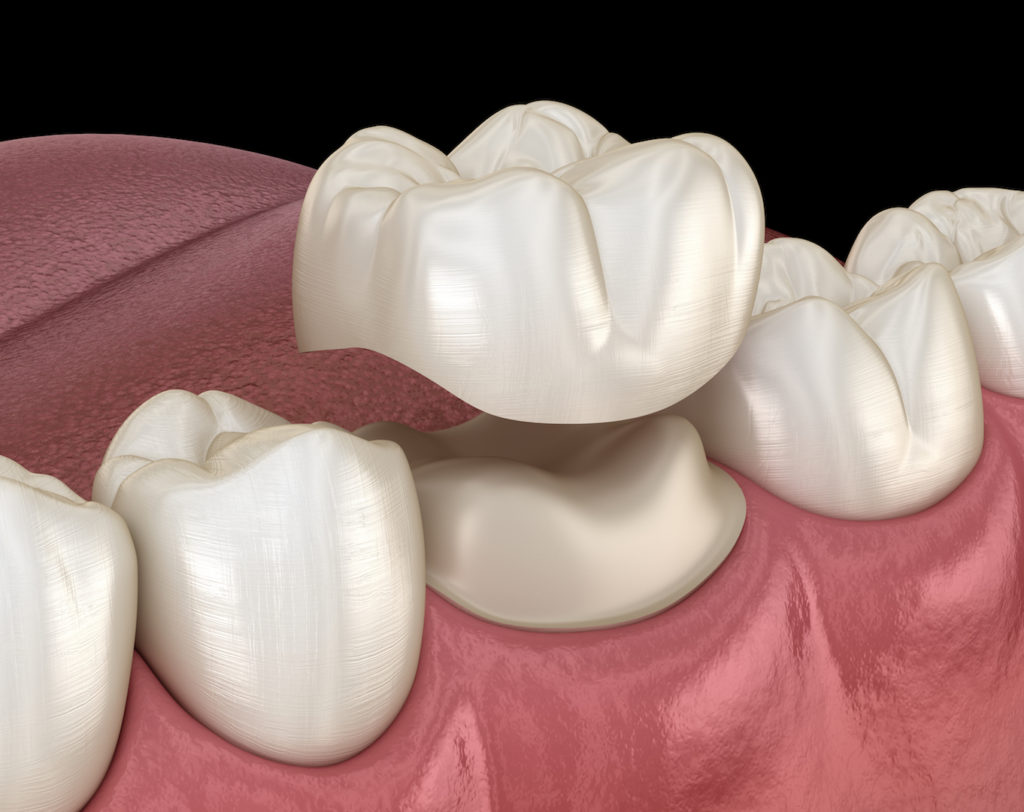DENTAL CROWNS AND BRIDGES NEAR YOU
Dental crowns and bridges are dental prosthetics that are used to restore decayed, damaged, or missing teeth. Crowns are like caps that fit over the top of a natural tooth in order to restore it once the decayed or damaged tissue has been removed. Dental bridges are composed of one or more dental crowns with a pontic, or fake tooth, bonded in the middle. Like their name suggests, a bridge spans over the gap left by a missing tooth.
Did You Know?
The very first dental crowns were seen in ancient Estruscan (Italian) civilization. These dental crowns were made out of ivory, gold, and bone. Nowadays, gold can still be used for crowns, but other dental materials are now available for a more aesthetic look.
Frequently Asked Questions:
Am I a candidate for a crown or bridge?
You may be a candidate for a dental crown if you have one tooth that is severely decayed or damaged and in need of restoration. Dental crowns can also be used to restore a tooth that has become permanently stained and does not respond to whitening treatments.
You may be a candidate for a dental bridge if you are looking to restore a missing tooth surrounded by mostly healthy teeth. To determine if you are an ideal candidate for a dental crown or bridge, schedule a consultation with your Kamloops dental office today
What are the different types of dental crowns?
There are five different types of dental crowns, including:

- Metal crowns made from gold, platinum, copper, or base metal alloys. Metal crowns are extremely durable however they can cause discoloration of the tooth as they erode over time.
- All-ceramic or all-porcelain crowns are made to be completely metal free and are the most aesthetic crown option available. In most cases, cosmetic dentists tend to recommend the use of all ceramic or porcelain dental crowns, especially when restoring a tooth towards the front of the mouth.
- Porcelain fused to metal (PFM) crowns are composed of a metal frame with a porcelain exterior. Therefore, it combines the strength of a metal crown with the aesthetics of porcelain.
- All- resin crowns are affordable, however they are not very strong.
- Stainless steel crowns are generally used as temporary crowns however they can also be used for children.
What types of dental bridges are there?
There are four different types of dental bridges to choose from. The first type of dental bridge is a traditional bridge. This bridge consists of two dental crowns on either side of a fake tooth or, pontic. This is one of the most commonly used types of bridges. Another type of bridge is the Cantilever bridge. This type of bridge only has a dental crown on one side of the fake tooth. Because of this it is not very commonly used.




There is also the Maryland bonded bridge. A Maryland bonded bridge uses a wire framework to stabilize the fake tooth instead of dental crowns. This framework is usually cemented to the backside of the surrounding teeth and is not immediately visible. The final type of dental bridge is an implant-supported dental bridge. An implant-supported bridge uses dental implants to anchor the bridge in place and can be used to restore multiple adjacent missing teeth.
What can I expect when having a dental crown or bridge placed?

In order to place your crown or bridge, our dentist will use dental anesthetic and possible sedation to ensure that you are comfortable and relaxed during the procedure. Placing a dental crown or bridge generally requires a minimum of two dental appointments. During the first appointment, the affected tooth will need to be prepared for the restoration. In the case of a dental crown, a single tooth will need to be prepared, however for a dental bridge at least two of the teeth will need to be prepared.
To begin, any damaged or decayed tissue must be removed first. The remaining tooth tissue will be reduced in size so that a dental crown can fix over the top without interrupting the bite alignment. Once the tooth has been prepared, a dental impression or oral scan will be taken of the mouth and sent to a dental laboratory. While your crown or bridge is being custom fabricated, you will have a temporary restoration placed. When your permanent restoration has been completed, it will be fitted and cemented into place.
What can I expect after having a dental crown or bridge placed?
In between your first and second appointment, you will need to exercise special care not to dislodge or damage your temporary restoration. In fact, your dentist will recommend that you avoid chewing on the same side as the temporary restoration. You will also want to avoid any foods that are excessively chewy or sticky. Once your permanent dental crown or fridge has been placed, you will be able to return to your normal routine and diet.
In order to prevent your crown or bridge from being damaged, you will still want to exercise care when eating any foods that are hard, crunchy, chewy, or sticky. Additionally, you will want to avoid habits such as nail biting, grinding or clenching your teeth, using your teeth to open packages, and chewing on ice or pens.
As a final note, you need to care for your crown or bridge by maintaining a good oral hygiene routine. This routine should consist of brushing twice a day and flossing daily. It should also consist of regular dental exams and cleanings at least once every 6 months.


